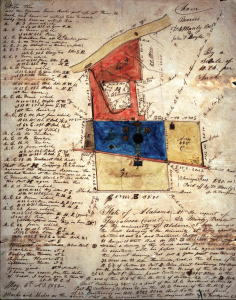ADVANCING THE FLAGSHIP
Key physical implications of the University’s 2016 Strategic Plan:
- Infrastructure that promotes a thriving research and economic development enterprise
- Campus life that embodies collaboration, collegiality, respect and a culture of inclusivity
- Facilities that enable and support equity, inclusion and diversity for our campus
- Places for co-curricular activities that encourage collaboration among students, faculty, staff and the community
The University has embarked on a periodic update of its Campus Master Plan, to reconfirm and extend our long-term, campus-wide vision,
to set clear directions for coordinated action and to assign responsibility and authority for plan implementation.
Since its inception, the University of Alabama has been both a participant in and a reflection of the history and progress of the state and the nation. Like a formal garden, this university campus is never finished, but is in a continual process of recreating itself, in accord with an overall vision, as needed or desired to direct or respond to times and conditions.
The vision for the University of Alabama campus dates from 1829. The original campus was designed by State Architect William Nichols, using traditional American campus planning and design principles.
Virtually all campus buildings were destroyed during the Civil War. But the University rebuilt in accordance with its original planning and design principles, which also guided three successive building periods over the next century. Each building program established and reinforced major and minor axes in the campus. That design pattern lent to the University campus dramatic and captivating open spaces bounded by multi-storied buildings.
Each building period took advantage of climate, topography, and natural drainage patterns even while establishing formal, man-made geometries on the landscape. And within each of those building periods, addition of landscaping, site furnishings, and circulation infrastructure reinforced a cohesive system of beautiful open spaces framed by equally beautiful, dignified buildings.
Placement of key buildings on major and minor axes added nuance to the campus design, creating breathtaking vistas terminated by significant architectural elements. Each project ensured that building sites and adjacent open spaces were woven together.
Following patterns of development that swept across America from the 1950s, significant growth and change on the campus produced buildings and areas of the campus of a suburban, automobile-oriented character, diverging significantly from the traditional core campus. For over three decades, much of that investment expanded the footprint of the campus, leaving students, faculty and staff more dependent on personal automobiles for access and circulation across larger areas of lesser density and character. Following campus master plans of 1985, 1993 and 1999, the campus continued to expand eastward, with new buildings set away from the campus center and at greater distances from one another.
